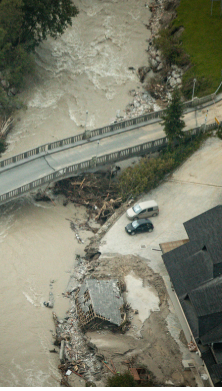This article is part of the
Global claims review 2022
More innovative designs, new materials and methods of construction are creating fertile ground for large liability claims against architects, engineers, developers and construction companies. Large complex construction projects increasingly rely on input from external professionals that are highly specialized in providing technical expertise in their fields, such as water resources and environmental engineers, geologists, metallurgists or design architects. However, errors in data, statistical process control, detailed design and performance assessment or simply poor advice are leading to problems that are difficult and expensive to rectify.
AGCS, and other insurers, have experienced an increase in the frequency and severity of large construction-related professional liability claims, both for project-based cover and annual contracts, explains Diego Assef, Head of Global Practice Group for Professional Indemnity Claims at AGCS.
“Complex projects – where new technology, materials and innovative building designs are pushing boundaries – are where we see the biggest and most complex claims against professionals and construction companies for design work and supervision of works. In particular, we have seen claims relating to third party specialists, such as geologists used in designing highways, or specialist engineers for designing cladding, ventilation, heating and air-conditioning systems for hospitals and residential buildings,” says Assef.
The construction industry has seen large claims related to the use of external cladding on high-rise buildings, which has led to a number of fires, including the Grenfell Tower fire of 2017 in the UK, in which 72 people tragically lost their lives. Similar fires have occurred in the Middle East, Asia, Australia and Europe, leading to calls to remove unsafe cladding from residential buildings.
“Cladding related liability claims are complex, involving many parties, including developers, design architects and engineers, contractors and manufacturers. Establishing liability is not always possible, and recoveries are complex. For instance, many small firms have since become insolvent and larger ones might be heading towards the same fate depending on the changes in legislation that are forthcoming in different jurisdictions around the globe,” says Assef.
In response, the UK [1] has proposed the retroactive extension of the limitation period – for building owners and occupiers to seek compensation for defective work or material – from six to 30 years. Similar measures to extend the limitation period have been introduced in Australia [2].Extending the limitation period could result in new claims being filed against professionals and manufacturers related to defective cladding, according to Assef.
“The proposed changes to UK building law would extend the limitation period and possibly shift the burden of defective cladding claims to developers, which could initiate a domino effect on all other involved specialists in the construction project such as architects and engineers, leading to a second wave of cladding-related claims for the insurance industry,” Assef concludes.
References
[1] Gov.UK, Redress: factsheet, April 5, 2022
[2] Urban Lawyers, Limitation period for combustible cladding claims extended to 15 years, March 27, 2022
Picture: AdobeStock















